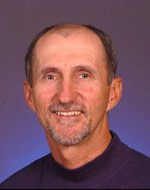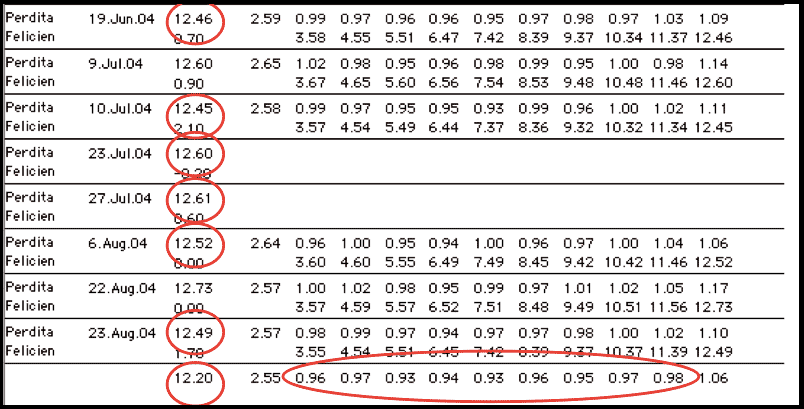
Track & Field was more than just a sport to former Illinois and Florida State women’s track & field head coach Gary Winckler; it was an opportunity to help young women succeed both on and off the track. Nationally regarded as one of the nation’s most premier coaches, Winckler’s Illinois teams regularly battled for Big Ten Conference Championships, winning a total of 11 during his time in Champaign. He was named the Big Ten Coach of the Year 11 times, the 2007 USTFCCCA Midwest Region Outdoor Track & Field Coach of the Year, and was named NCAA Division I Coach of the Year three times. Winckler-coached athletes earned 266 Big Ten individual titles and over 175 All-American honors. Dating back to 1992 Winckler has had an athlete compete in every World Championship and Olympic Games. Prior to his arrival on the Illinois campus Winckler coached at Florida State University, leading the Seminole women to the 1984 NCAA outdoor title and the 1985 NCAA indoor title. His 1984 team scored the second-most points (145) in NCAA history at the women’s outdoor championships.
In the summer of 2003, Winckler coached Perdita Felicien to a gold medal in the 100 m hurdles at the World Championships, the first-ever gold medal for an Illini athlete at the World Championships. In the spring of 2004, Felicien set a new personal best and established a new Canadian national mark of 12.46 with her performance at the Prefontaine Classic. Felicien continues to see success on the track, recently taking home the silver medal in the 100 m hurdles at both the 2007 World Championships and the 2007 Pan American Games. (Source: USTFCCA and University of Illinois)
Hurdle Rhythmic Units and Developing Speed

Table 1: Hurdle Rhythmic Units
Freelap USA — You have a great progression in helping hurdlers with improving split times between hurdles by adjusting spacing to achieve rhythmic units in practice. With meets being a very clear indication of training, how do you develop general speed without hurdles and blend this all together? Maximal speed on the flats isn’t a ticket to success, but each athlete can transfer their general abilities differently and experience here would be helpful.
Winckler — The more accomplished the hurdler, the more specialized the running between hurdles becomes. This fact mandates that we become aware of how we train speed in that the wrong prescription can lead to unwanted results. I focus on step length and frequency and correlating these requirements in competition to methods used for speed development in training. If the average step length for a hurdler is 1.90 m between hurdles then I would like to replicate that step length in speed training on the flat. We did 30 m flying runs but in doing the runs mandated a high frequency run utilizing 15.5 steps to cover the distance. This correlates pretty well with inter-hurdle running.
Carl’s Take — High frequency is a clear need for those sprinting in the sprint hurdlers. Men’s hurdles and women’s hurdles are different races as the hurdle height, spacing, and athletes have unique features. Research looking at each step of elite hurdlers shows that every step is unique between barriers and purposeful cutting of the step length is not only essential, it’s one of the leading differences between national level and international level hurdlers. Rhythmic units or touchdowns are easily captured by using Freelap timing and I have found that collecting data via transmitters is far more accurate than hand time and much more convenient during practice. Meet situations you will need to manual do this for race analysis, but practices are done instantly and passively.
Creating the Perfect Takeoff and Cueing
Freelap USA — Take offs into the hurdle seem to be a prime culprit for errors and you have gone into detail on this several times with coaching education and writings. Much of the current discussion is how to improve take offs with drills and exercises but many coaches prefer cueing the whole activity. Any wisdom on making sure the cut step is mastered?
Winckler — Drills can be useful as long as they accomplish the task. The takeoff mechanism is by far the key to good hurdling and good running between. I prefer to focus on the penultimate step to the takeoff itself. If this step is very reactive it sets up a quickened rhythm in the last two steps, which aids in placing the takeoff foot under the center of mass. This in turn transfers momentum into the hurdle and diminishes velocity losses. There is much to be gleaned from this concept and it would take a lot longer to give it justice.
Carl’s Take — A great primer for takeoffs can be found here as Gary is simply a gifted explainer of mechanics. Coaches can see instant feedback if they measure the velocities of each hurdle cycle and look to see if stride changes as well as pelvic height is matching the improvements or regressions. One can use video analysis software such as Dartfish to see this accurately as most apps don’t have the ability to see this.
Managing Training during Cold Weather Months
Freelap USA — The Polar Vortex did a number on Illinois and the outdoor options in training are very limited with several schools during indoors and outdoors. Knowing you had world class athletes training in the 100 and 400 hurdles, what are your thoughts on managing limited warm weather training and hard surfaces? Many coaches and athletes are especially interested in Tonya Buford-Bailey.
Winckler — You have to play the cards you are dealt. We knew we had outdoor training only from Sept to mid November and again maybe only late March thru June. For this reason I tried to utilize the fall weather to set up a good technical model and a good strength and speed endurance foundation. We did speed work in the fall but it was not a big emphasis because I knew I could do short speed when confined to the indoor track. Indoors the 400 hurdlers would do lots of runs over 4-5 hurdles spaced at 9-11 step spacings working on hurdle skill with both legs and transitions into and off of hurdles. With this background we could then focus on race distribution and longer hurdle runs once we could get outdoors knowing that the speed and acceleration portions of the race had been developed indoors.
Carl’s Take — My interest into cold weather training is a selfish one being in the northeast, but many coaches are experiencing the challenges of development without warm weather. I still do warm weather camps to get favorable conditions in training, but it’s good to see what can be done at the world-class level without living in the warmer climates. Many coaches resort to creative workouts to manage the warm weather gap, and from the medals accomplished by Gary’s athletes, he managed rather well.
The Importance of Personal Interaction with Athletes
Freelap USA — Many great coaches have gone on to work with horses in some way, be it just general recreation or competition. Equine sport is very progressive in sport science but many of the best trainers have the gift of reading the animals without fancy technology. Being a coach who sometimes would have to work with many athletes at the same time, how did you pick up on non-verbal communication to mange fatigue an creeping injury? Many coaches talk about reading athletes but do you have something more concrete that can help young coaches read athletes better?
Winckler — The difference between horses and humans is “horses never lie”. Working with animals does make us better coaches in my opinion because we have to develop the ability to read and understand what is going on without verbal input. My best advice is to get to know your athletes as well as you can. The better we know them the better we will be able to discern when they need rest, recovery, or work. I like to read the athlete’s eyes. Are they bright and eager or sunken and worried. This would always give me a clue as to whether I needed to ask some deeper questions to find out where they were. I always felt that a day off or of easier work for a stressed athlete paid far bigger dividends than pushing them to the point of illness or injury and losing a week of training.
Carl’s Take — I wrote about the power of eye contact, something you can’t get from a text message but something a HD video conferencing option is helping to manage when athletes are away. Obviously face-to-face is ideal, but with athletes in college and above, sometimes a video chat is better than a phone call. Other successful coaches Bob Bowman and Tom Tellez have horses by the way, and some coaches believe that reading eyes is extremely powerful.
The Importance of Quality over Quantity
Freelap USA — You are regarded as one of the most organized and analytical coaches in track and field and are recognized internationally for your mathematical mind. Besides the data from the training sessions what did you do at the end of practices or meets to help guide your training besides the numbers? Anything in sport psychology that can help coaches prepare athletes beyond the track and weight room?
Winckler — I did keep track of lots of data as I coached. However, this was not the most useful tool in evaluation. I think being the best observer you can be is a skill that will pay far bigger dividends. Along with this goes a clear and well-defined idea of what the objective of training is for the session. I always am asked how much of a particular type of training do I do in a session. My answer is usually that the volume of work is determined by the athlete’s ability to execute it well. If I am doing a speed endurance session and the prescription is say 5 x 200 m and some of the athletes can only run 3 of them with good running technique, then if I push them through the five runs I am more than likely reinforcing poor running mechanics for half the workout. What have I accomplished? I’m a huge believer in running efficiency and think that it gets sacrificed a lot for the sake of trying to achieve a certain volume of work. Volume is important but the athlete must be prepared to do the volume and this preparation has to come first.
Carl’s Take — Choosing the correct time to stop a workout is an art form, and not something you can just get from a coaching course or article. With a small finite amount of reps it’s very hard to decide when is the right time without pulling the trigger too early. Doing 3 x 200 m and 5 x 200 m is not revolutionary from a training choice, but knowing when to do 3 instead of 4 could be the difference between injury and improvement. Nothing, including the best data, can replace what is gained from just being present and having skin in the game.
Please share this article so others may benefit.
[mashshare]

Hello Coach Winckler,
I have read a number of your articles (both primary and secondary). I have read Dr. Ross and his methods as well. I have gotten a great deal of insight and knowledge. But there are some areas that stump me. However, small but necessary and important. Most of my questions will fall under the intermediate hurdles. I have a young man who is quite talented but shorter than most hurdlers about 5’7” very limited flexibility but shows strengths in the intermediates. He has a lot of trouble flattening out his trail leg.